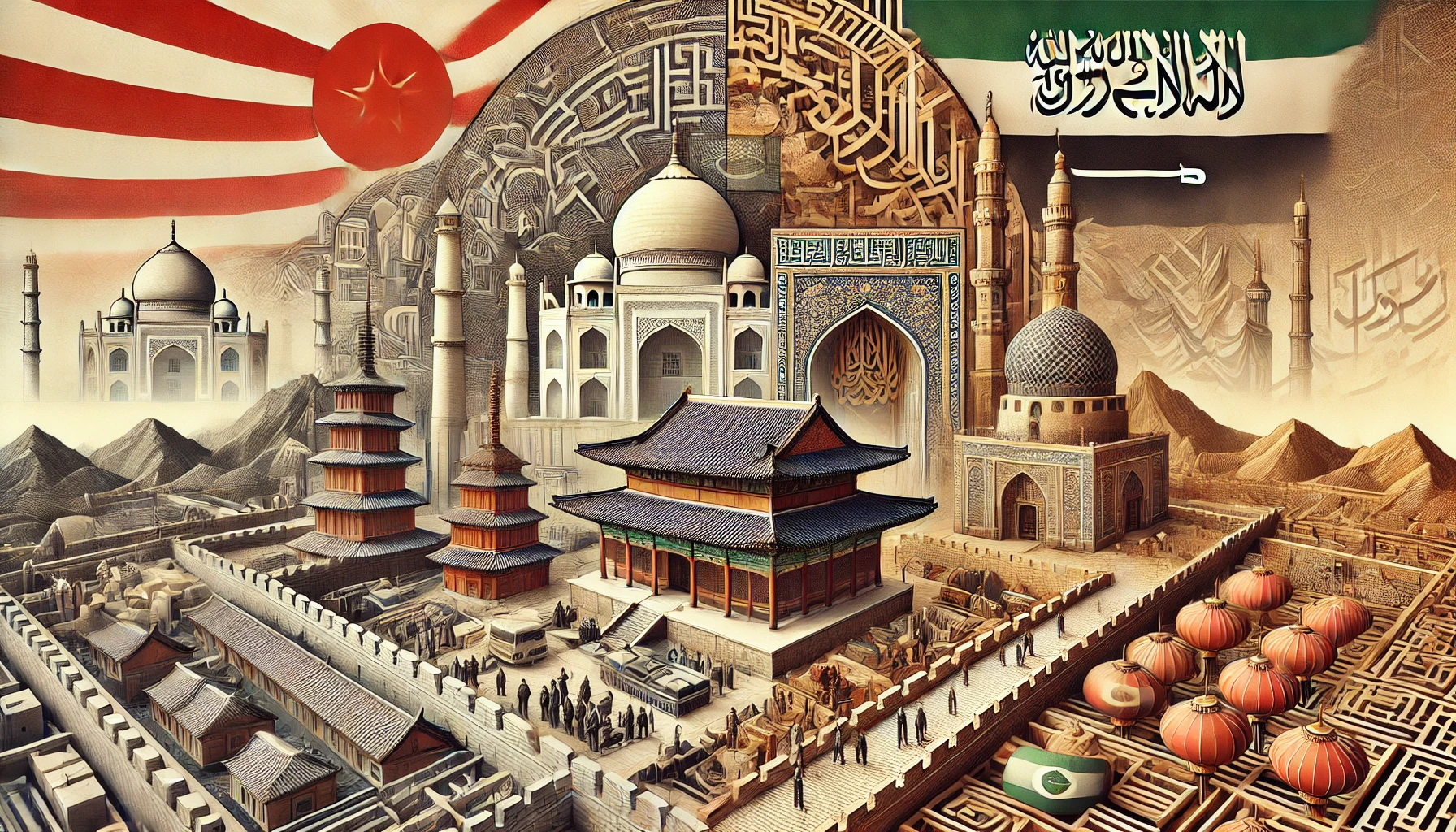Introduction
Let us examine political systems of East Asian and Islamic regimes. These regions have distinct characteristics that set them apart from Western political systems. By understanding the rise, cultural influences, and diversity within these regions, we can better appreciate the complexities of global politics.
Table: Characteristics of East Asian Regimes
| Characteristic | Description | Example Countries |
| Strong Government | Centralized authority to maintain order and achieve goals | China, Singapore |
| Respect for Leadership | Leaders are trusted and seen as responsible for national well-being | Japan, South Korea |
| Economic Focus | Prioritization of economic development over political freedoms | Hong Kong, Taiwan |
| Community and Social Cohesion | Emphasis on social stability and collective well-being | Japan, South Korea |
Differences Between East Asian States
While there are common characteristics, East Asian states also exhibit significant differences due to cultural, historical, and political factors:
- Japan: Japan’s political system, influenced by its post-World War II constitution, combines elements of democracy with traditional values. It features a parliamentary system with a strong bureaucratic structure.
- China: China’s political system is characterized by one-party rule under the Communist Party, with significant state control over the economy and society. Despite economic liberalization, political freedoms remain restricted.
- South Korea and Taiwan: Both countries transitioned to democratic systems in the late 20th century, balancing economic growth with increasing political freedoms.
- Singapore and Hong Kong: These city-states emphasize economic efficiency and strong governance, with a more technocratic approach to policy-making.
- Table: Differences Between East Asian States
Country Political System Characteristics Japan Parliamentary system with strong bureaucratic structure, influenced by democracy China One-party rule under the Communist Party, significant state control South Korea, Taiwan Democratic systems with economic growth Singapore, Hong Kong Emphasis on economic efficiency and strong governance, technocratic approach
Islamic Regimes
The rise of political Islam has profoundly impacted regimes in North Africa, the Middle East, and parts of Asia. Political Islam seeks to integrate Islamic principles and laws into governance, creating a unique blend of religion and politics.
Fundamentalist and Pluralist Extremes
Political Islam spans a spectrum from fundamentalist to pluralist interpretations:
- Fundamentalist Islam: Fundamentalist regimes strictly enforce Shari’a law and aim to create a theocratic state. Iran under Ayatollah Khomeini and the Taliban regime in Afghanistan are examples of this extreme, where religious leaders wield significant political power.
- Pluralist Islam: Some Islamic regimes adopt a more pluralist approach, incorporating Islamic principles while allowing for democratic processes and political pluralism. Malaysia exemplifies this approach, where Islam is the state religion, but a multiparty democracy operates within a framework of guided democracy.
- Table: Fundamentalist vs. Pluralist Islamic Regimes
Type of Regime Characteristics Example Countries Fundamentalist Islam Strict enforcement of Shari’a law, theocratic state Iran, Taliban’s Afghanistan Pluralist Islam Integration of Islamic principles with democratic processes Malaysia Examples of Islamic Regimes
- Iran:
- Iranian Revolution of 1979: Established an Islamic republic under Ayatollah Khomeini, institutionalizing clerical rule through the Islamic Revolutionary Council. Despite having a popularly elected parliament, all legislation is subject to review by the Council for the Protection of the Constitution to ensure conformity with Islamic principles.
- Khomeini’s Regime: Emphasized the strict enforcement of Shari’a law, with significant restrictions on individual freedoms and social behavior. While there have been periods of relative pragmatism, the fundamentalist approach remains dominant.
- Saudi Arabia:
- Islamic State Since Inception: Saudi Arabia has been an Islamic state since its inception in 1932, with governance based on strict Wahhabi interpretations of Islam. The monarchy holds absolute power, with political decisions heavily influenced by religious leaders.
- Legal System: Based on Shari’a law, and social policies reflect conservative Islamic values. The regime maintains its authority through a combination of religious legitimacy and oil wealth.
- Malaysia:
- Pluralist Approach: Malaysia represents a more pluralist approach, with Islam as the official state religion. The political system is characterized by a dominant party, the United Malays National Organization (UMNO), operating within a multiparty framework.
- Government: Led by Prime Minister Dr. Mahathir Mohamad since 1981, has pursued a blend of Islamic values and economic modernization, drawing on Japanese models of development. Despite occasional authoritarian tendencies, Malaysia has maintained a level of political pluralism and democratic practices
- Table: Examples of Islamic Regimes
Country Political System Characteristics Iran Islamic republic, clerical rule, strict enforcement of Shari’a law, limited individual freedoms Saudi Arabia Absolute monarchy, strict Wahhabi interpretations of Islam, Shari’a law-based legal system, conservative values Malaysia Pluralist approach, dominant party (UMNO), blend of Islamic values and economic modernization, political pluralism
- Iran:
Impact of Different Interpretations of Islam on Political Practice
- Fundamentalist Regimes: In countries like Iran and Saudi Arabia, political Islam results in the integration of religious laws into all aspects of governance, often leading to strict social policies and limited political freedoms.
- Pluralist Regimes: In contrast, pluralist Islamic regimes like Malaysia incorporate Islamic principles into a broader democratic framework, allowing for political participation and diversity while maintaining an Islamic identity.
Conclusion
East Asian and Islamic regimes offer unique insights into how cultural, religious, and historical factors shape political systems. East Asian regimes, influenced by Confucian values, prioritize strong governance and economic development, while Islamic regimes vary widely from fundamentalist to pluralist interpretations of political Islam. Understanding these regional political systems highlights the diversity of governance structures and their impact on global politics. The dynamics within these regions reflect the ongoing interplay between tradition and modernity, shaping the political landscape in complex and evolving ways.




